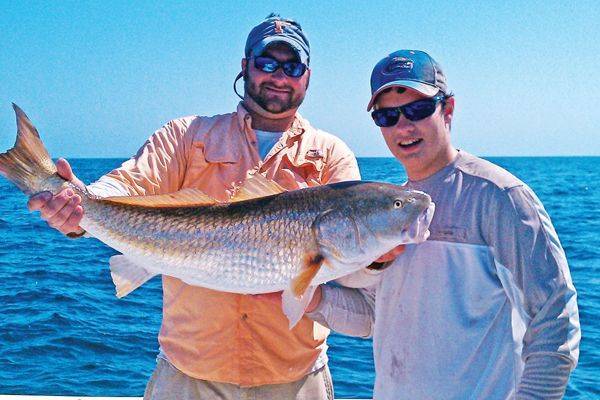[dropcap]T[/dropcap]he Redfish as a sport fish and to a lesser extent a “food fish” has gained far more popularity than the Florida Wildlife Commission (FWC) predicted years back when it declared it a “restrictive” species. “Reds” are a fast growing, semi-fast populating fish but the effects of it becoming the most popular inshore sport fish in Florida is starting to show as anglers have become more sophisticated and knowledgeable in hooking them up. The FWC’s plan to have local fish hatcheries placed around Florida to educate, augment the fish catch rate and bolster Florida’s eco-system is probably going to be severely curtailed by our current economic crisis. We as anglers have to make the decision, will we be the “end users” of our fishing areas or will we improve our fishing in the present and for the future? If we want our fishing to improve, we too have to step up and take personal responsibility for our fish populations and not expect hatcheries to do the ob.
Bull reds, “jumbos”, “hogs”, whatever you want to call them put up some of the greatest inshore fighting from a fish that most people will ever encounter. They are a “hardy” species but still need special care. Most of these redfish are caught in deeper water around the inlets and channels, some on the flats. As stated in Capt. Luke Pearson’s report on page 10, these fish need to be caught with the appropriate tackle, 2-lb.test and up using large circle hooks. These big reds release 500,000 to 1,000,000 eggs during spawn, most of which don’t survive, but the ones that do have superb genetics. The handling and releasing the big reds has gone through some changes through the years. Lip gaffing, holding the gills, photographing and just “tossing over” weak redfish sometimes kills fish reducing on our stocks. The new “fish grippers” have made it easy to hand a red in font of a camera but now we know that a heavy fish hung by its jaw is not as a safe way to handle a bull red. Use your “fish grippers” to get a handle on your redfish but make sure the redfish is fully supported while taking a photo. Have your camera on and ready for the shot so the red can be placed back in the water quickly. If its already exhausted make sure it is revived well enough to swim off before it’s released. Even move to shallow water, if you have to, there you can watch the redfish making sure the fish can swim off on its own. Remember, it’s up to us local anglers to make sure redfish survive and populate in the areas we fish. Fishing for “bull reds” is great sport, if you want to feel some drag screamin’ drag pullin’ action, get on out there!

